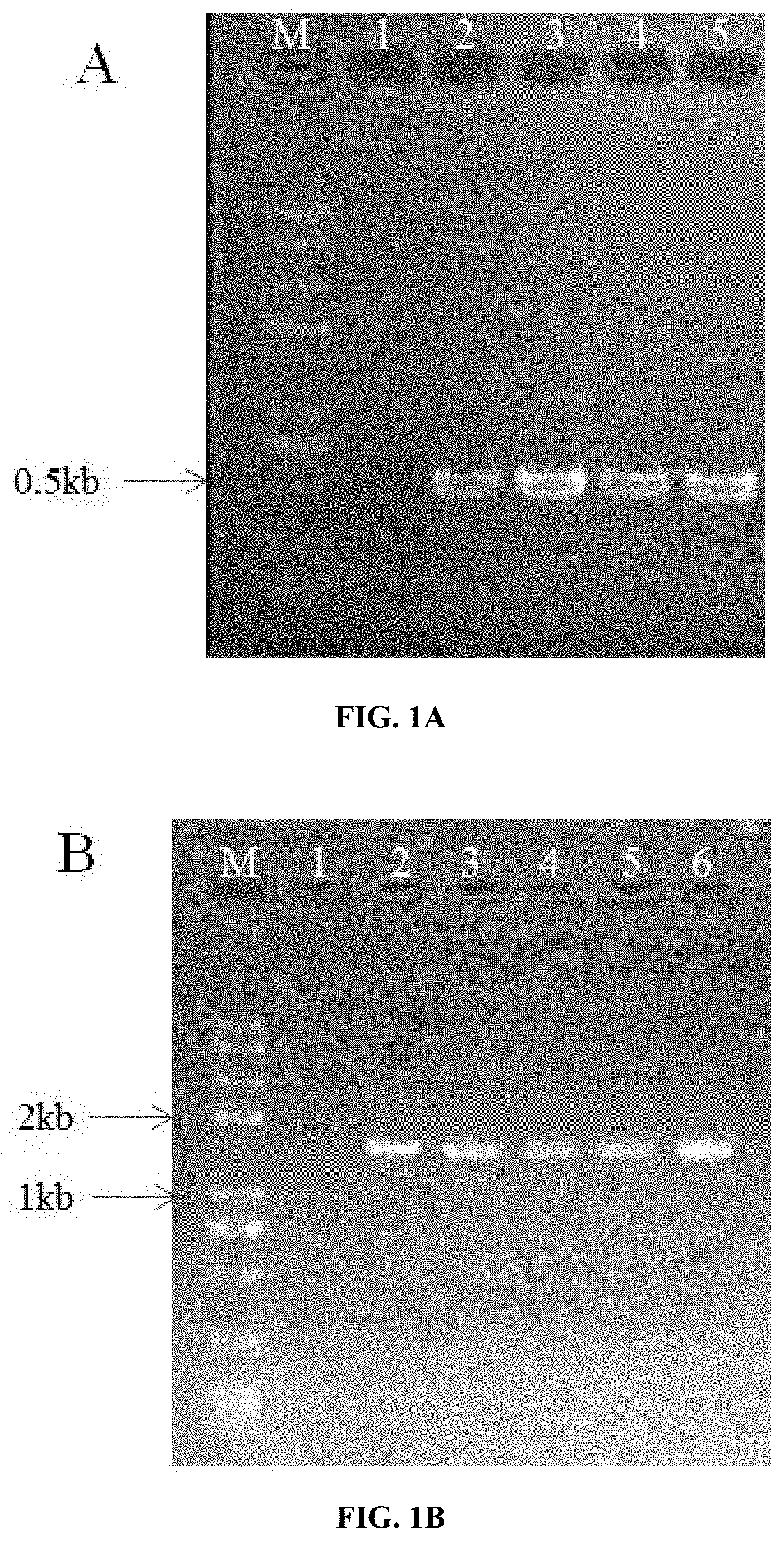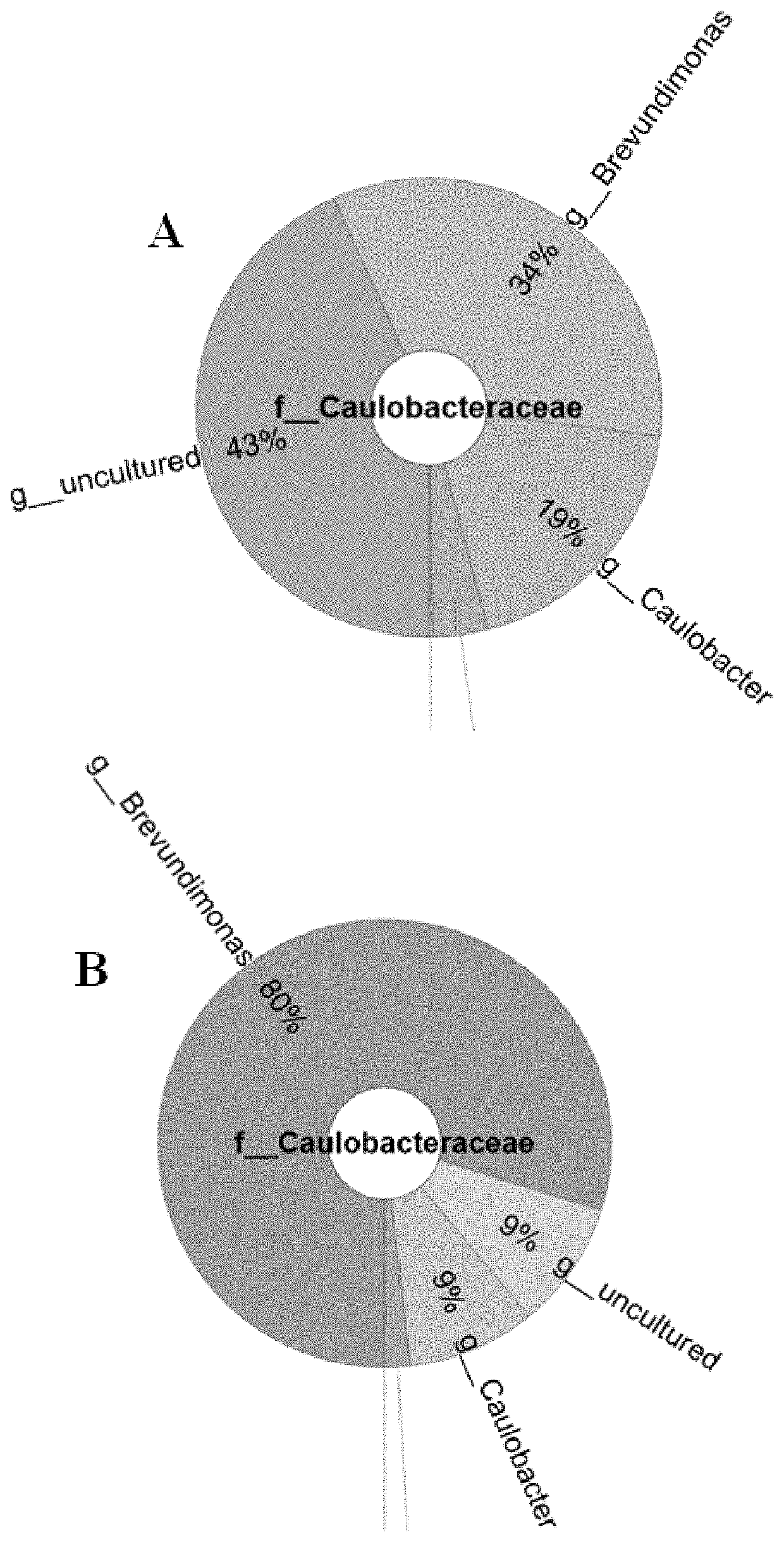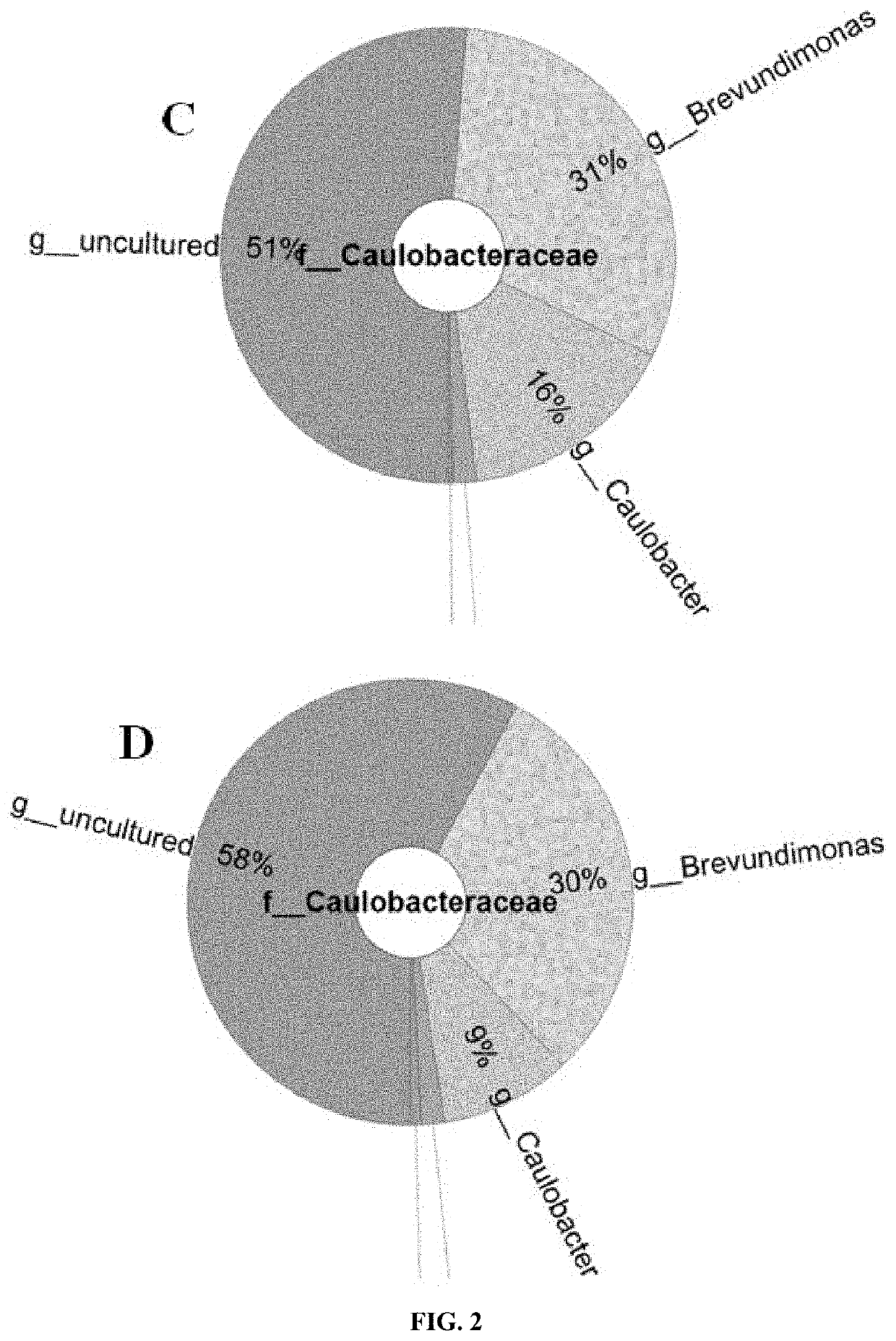Brevundimonas strain as endosymbiont of verticillium dahliae and use thereof
- Summary
- Abstract
- Description
- Claims
- Application Information
AI Technical Summary
Benefits of technology
Problems solved by technology
Method used
Image
Examples
example 5
e Pot Experiment
[0053]Cotton seed treatment: 70% ethanol was used to remove the cotton seed coatings. The seeds were soaked in warm water at 55° C. for 30 min, then at room temperature for 8 h and drained. Germination was accelerated at 25° C. When the seeds showed white contents, they were sown. Cotton seedling cultivation:mixed nutrient soil (flower nutrient soil:natural field soil of 1:1) was sterilized, and 3-5 seeds were sown for each flowerpot. Preparation of microbial suspensions for the treatment groups: a. V. dahliae 36928, b. symbiont-free 36928 (symbiont removed by antibiotic), c. V. dahliae 36928+symbiont-free 36928, d. B. olei, e. sterile water as blank control. The concentration of microbial suspension was 1×109 cfu / mL. A root-watering method was used to inoculate the pathogen. When cotton seedlings had two true leaves, the pathogen was inoculated in an amount of 10 mL per pot. After inoculation, watering was carried out every 2 days and the growth status was observed....
PUM
 Login to View More
Login to View More Abstract
Description
Claims
Application Information
 Login to View More
Login to View More - R&D
- Intellectual Property
- Life Sciences
- Materials
- Tech Scout
- Unparalleled Data Quality
- Higher Quality Content
- 60% Fewer Hallucinations
Browse by: Latest US Patents, China's latest patents, Technical Efficacy Thesaurus, Application Domain, Technology Topic, Popular Technical Reports.
© 2025 PatSnap. All rights reserved.Legal|Privacy policy|Modern Slavery Act Transparency Statement|Sitemap|About US| Contact US: help@patsnap.com



